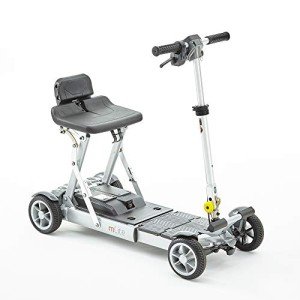Understanding Mobility Aids: Enhancing Independence and Quality of Life
As society continues to age and people increasingly look for ways to keep self-reliance, the need for mobility aids has actually never ever been more essential. Mobility aids, which include a variety of devices designed to help individuals with walking or moving, play a crucial role in promoting mobility, boosting security, and enhancing general lifestyle. This blog site post will check out the different types of mobility aids, their advantages, considerations for selection, and answer some regularly asked concerns.
Kinds Of Mobility Aids
Numerous mobility aids are available, each created to attend to particular needs. The following table summarizes some of the most common types of mobility aids and their features.
| Type of Mobility Aid | Description | Best Suited For | Key Features |
|---|---|---|---|
| Walking sticks | A portable stick offering support and balance. | People who require very little support. | Light-weight, portable, adjustable height. |
| Walkers | Four-legged frames supplying stability. | Those requiring substantial assistance while walking. | Foldable, some with wheels, added security functions. |
| Rollators | Wheeled walkers with a seat for resting. | Individuals needing mobility with the choice to rest. | Brakes, baskets for individual products, adjustable height. |
| Wheelchairs | Chairs with wheels for people with limited mobility. | Those unable to walk or needing extensive support. | Manual or powered alternatives, personalized seating. |
| Scooters | Motorized devices for larger ranges. | People with minimal stamina but needing independence. | Different sizes and designs, frequently easily transportable. |
| Crutches | Assistance devices put under the arms or lower arms. | People recovering from lower limb injuries. | Adjustable, lightweight, requires upper body strength. |
| Stairlifts | Mechanical devices for moving in between floorings. | Users dealing with challenges in multi-level homes. | Customizable for various staircases, automated. |
Advantages of Mobility Aids
Mobility aids supply an array of benefits that can significantly improve the lives of individuals facing mobility challenges. Some noteworthy benefits consist of:
- Increased Independence: Mobility aids empower individuals to move freely without counting on others for support, thereby improving their confidence and self-confidence.
- Boosted Safety: Using mobility aids can minimize the threat of falls and injuries, particularly for older adults or those with balance issues.
- Improved Quality of Life: By helping with mobility, people can participate in social activities, go to events, and delight in life more completely, contributing to much better emotional and mental health.
- Rehab Support: After surgical treatment or injury, mobility aids offer necessary assistance and stability, helping in recovery and rehabilitation procedures.
- Availability: Many mobility aids are designed to be utilized both inside and outdoors, ensuring that individuals can browse various environments with ease.
Factors to Consider When Choosing Mobility Aids
Picking the proper mobility aid requires careful factor to consider of a number of factors, consisting of:
| Factor | Considerations |
|---|---|
| User's Needs | Evaluate the level of mobility required; consider whether the user needs temporary or long-term help. |
| Physical Limitations | Evaluate the user's strength, balance, and coordination to determine the best type of aid. |
| Setting | Consider the main environments where the aid will be used, such as home, outdoors, or particular terrains. |
| Weight and Portability | Make sure that the chosen device is workable relating to mobility and storage, specifically for outside usage. |
| Budget | Mobility aids can be found in a variety of rates; consider insurance protection and available financing options. |
| Adjustability | Choose aids that can be adjusted for height and convenience to accommodate development or changing needs. |
Often Asked Questions About Mobility Aids
1. How do I know if I need a mobility aid?
Numerous aspects can signal the need for a mobility help, such as trouble strolling or balancing, fatigue while standing, or a current surgery impacting mobility. Consulting with a healthcare professional can supply guidance customized to specific requirements.
2. What kinds of mobility aids are covered by insurance coverage?
Coverage varies between insurers, however a lot of supply alternatives for long lasting medical devices, which usually consists of wheelchairs, walkers, and some types of walking canes. Talk to your insurance supplier for specific coverage info.
3. Can mobility aids be utilized outdoors?
Yes, lots of contemporary mobility aids are designed for outdoor usage. our website , scooters, and some walkers are geared up with functions for stability and ease of use on numerous surface.
4. How do I maintain my mobility aid?
Routine maintenance includes inspecting for any wear and tear, ensuring that parts such as wheels, brakes, and frames are operating correctly, and cleaning up the devices as required. Following the manufacturer's standards is vital for security.
5. Exists a risk of ending up being depending on mobility aids?
While some users might become reliant on mobility aids, they are designed to promote self-reliance and mobility. Gradually utilizing a mobility help can enhance confidence and help maintain physical strength and coordination.
Mobility aids are important tools that empower individuals to get rid of physical challenges, promoting independence and boosting quality of life. By understanding the numerous types of mobility aids readily available, their advantages, and crucial elements for factor to consider, households and caretakers can make educated decisions that best meet the requirements of their liked ones. With the ideal assistance, those with mobility obstacles can lead satisfying and active lives, totally free to explore the world around them.

